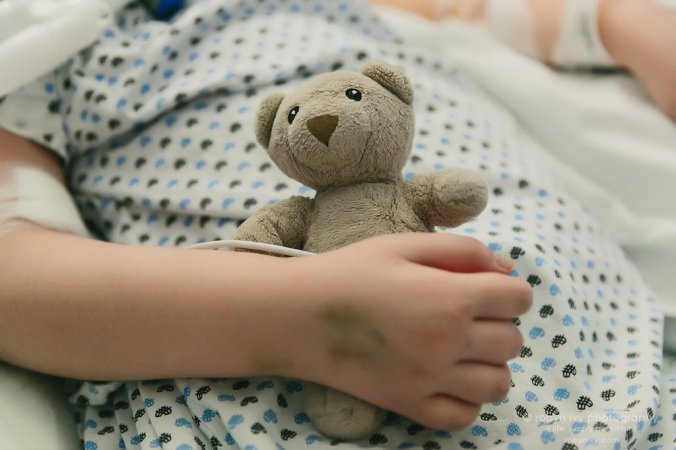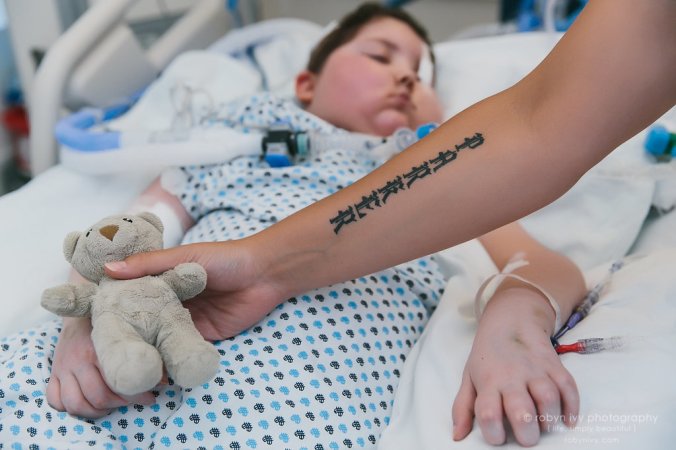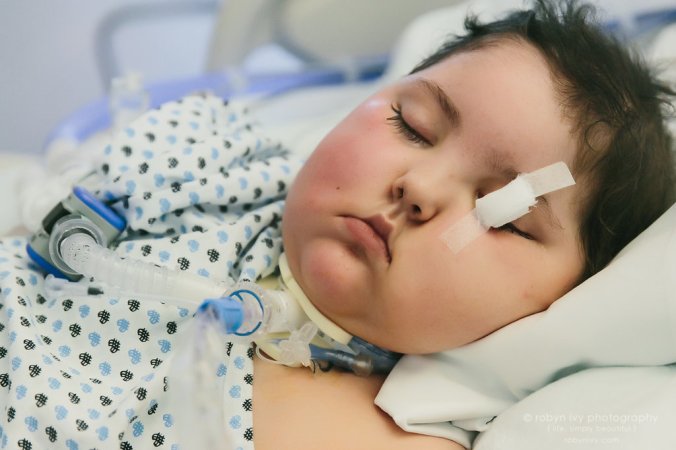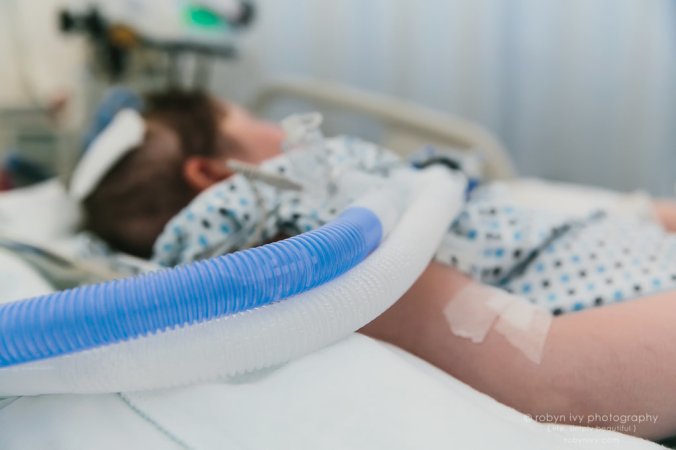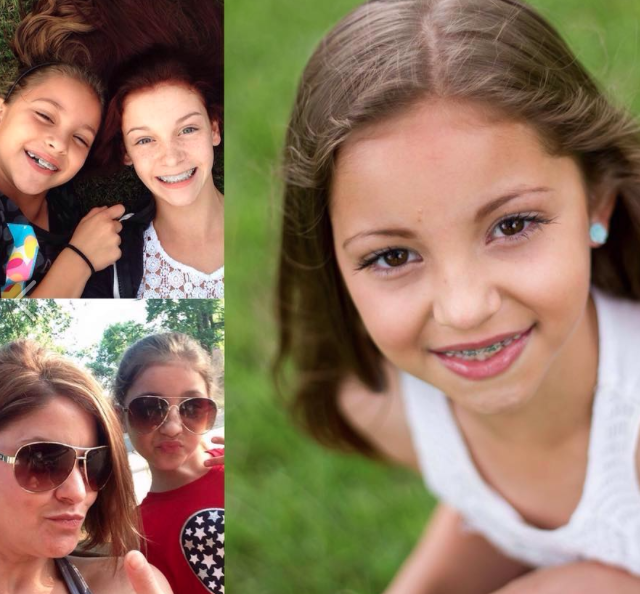
“Instead of begging that God heal Hunter, try asking, ‘What if Hunter has a complete healing?’”
That’s the suggestion a friend made to Hunter’s parents. It’s an interesting shift in perspective, one that helped replace their desperation in the statistics of a 1% survival rate with the possibility of hope that comes with having faith.
Just six days before Hunter’s 6th birthday, he was diagnosed with DIPG. Over the Christmas holidays in 2016, his parents Krista and Brad noticed that Hunter’s right eye wasn’t tracking as well as the left. After a week with no improvement, his pediatrician referred him to a pediatric ophthalmologist who thought a virus caused the problem, but ordered an MRI to rule out more serious causes. The MRI revealed a tumor, and they were sent for an immediate consult at Seattle Children’s Hospital main campus.
Krista recalls the meeting with the pediatric neuro-oncologist and the neurosurgeon. “It was so surreal…our world had totally shattered. I think I only heard about 10% of what they were communicating.” With Hunter sitting in the same room watching a show on his iPhone, the doctors told his parents that Hunter had a rare brain tumor in his brainstem that would “most likely take his life in one, at the most two years.”
Krista describes the days after Hunter’s diagnosis as a blur. Adding to the feeling of being in a fog, the doctors seemed vague in their description of his condition, initially referring to it as a brainstem glioma, and not DIPG.
“The first few weeks after diagnosis, my husband and I would break down together in the hallway away from Hunter and then regroup to go see him and try to be strong,” Krista says.
“There are a lot of tears shed alone in the garage or bathroom where Hunter can’t see. We are totally devastated. Hunter is our only child and the love of our lives. The thought of losing him is unbearable.”
Hunter underwent 30 days of radiation. Although the sessions themselves caused him stress, he otherwise came through the treatment well, with no significant side effects. Thankfully, he was able to discontinue steroids quickly, with only the palsy in his right eye remaining.
 Hunter went back to school half-days part way through radiation, and after he completed treatment on March 9th, the family decided to enjoy the “honeymoon period”—a brief time during which children often have few symptoms after radiation and before progression begins. They went to Arizona for a couple weeks to see Krista’s parents, where Hunter enjoyed swimming in the pool, and they visited the Grand Canyon and Sedona.
Hunter went back to school half-days part way through radiation, and after he completed treatment on March 9th, the family decided to enjoy the “honeymoon period”—a brief time during which children often have few symptoms after radiation and before progression begins. They went to Arizona for a couple weeks to see Krista’s parents, where Hunter enjoyed swimming in the pool, and they visited the Grand Canyon and Sedona.
Krista heard about the treatment in Monterrey from the DIPG Research Facebook page the same month. “I quickly realized there is nothing like this treatment anywhere else in the world, and I knew in my soul that it is the only treatment that provides any hope of a potential cure,” Krista explains. She reached out to Mariana Gutierrez, whose friend’s daughter was treated for the same cancer there. They talked about the treatment and the pros and cons of going before progression. At the time, Hunter still had few symptoms.
After the Arizona trip, Hunter had his first MRI following radiation, which showed a minimal 15% reduction in size of his tumor. The family went on a Make-A-Wish trip to Hawaii, where they had a fabulous time, but Hunter started having daily headaches.
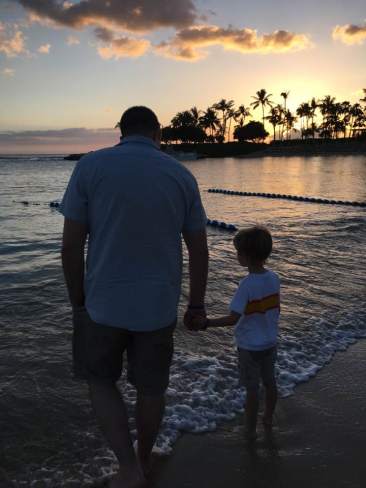 On their return from Hawaii, Krista contacted Mariana to schedule their trip to Monterrey in two weeks. However, “our universe cracked again” when Hunter—literally overnight—started having trouble swallowing, and the next day lost the use of his left side, and his speech became slow and slurred.
On their return from Hawaii, Krista contacted Mariana to schedule their trip to Monterrey in two weeks. However, “our universe cracked again” when Hunter—literally overnight—started having trouble swallowing, and the next day lost the use of his left side, and his speech became slow and slurred.
Krista contacted Seattle Children’s, but “[they] didn’t seem concerned. Sadly, DIPG kids are somewhat written off by mainstream medicine because there is no cure.”
At this point, Mariana arranged for Hunter to come to Monterrey in one week. An MRI confirmed that he had no fluid in his brain, clearing him for travel. But that scan also showed severe swelling and possible progression, which were causing his symptoms.
After arriving in Mexico in mid-May and receiving his first IA treatment, Hunter immediately started to show improvement. His speech was clear, and he regained some of the strength he’d lost. They went back for another IA treatment and Hunter’s first immunotherapy a few weeks later, at which point his MRI showed a 20% reduction in the size of his tumor from the last visit. Soon after, he had even greater mobility in his left arm, and he walked with more confidence, says mom. Hunter had another set of treatments scheduled the week we met, and he just completed his 4th IA and 3rd immunotherapy recently.
Krista says the hardest part of the journey has been trying to reconcile the WHY: “Why Hunter? Why us? Why this most hideous of cancers that takes everything from the children, and potentially from the families?”
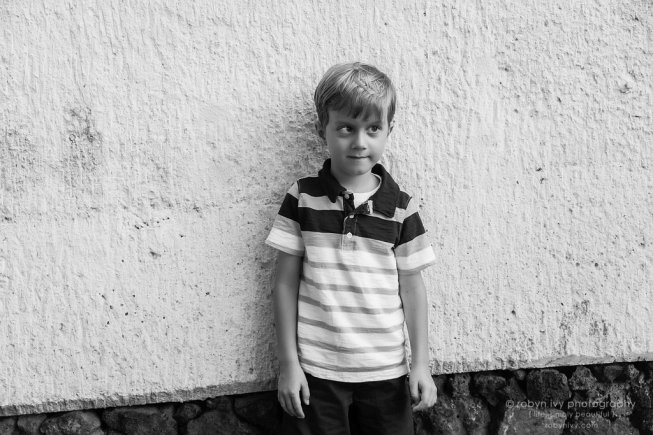 Hunter has had his own roller coaster of emotions, too. Fear and anxiety loom over his appointments and procedures, and he’s cried a few times, asking why he has to be different and have this “bump in his brain.” But he’s amazingly resilient, never complaining or saying no. He just asks when his appointments are.
Hunter has had his own roller coaster of emotions, too. Fear and anxiety loom over his appointments and procedures, and he’s cried a few times, asking why he has to be different and have this “bump in his brain.” But he’s amazingly resilient, never complaining or saying no. He just asks when his appointments are.
Which says a lot about Hunter, because he’s a planner. In preparation for each holiday, he helps his parents make to-do lists, and he looks forward to the family’s annual 4th of July camping trip in the San Juan Islands, talking at length about everything they’re going to do before they arrive.
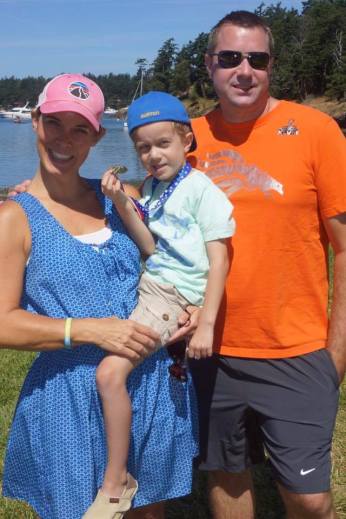
Hunter’s also always known what he wants to be when he grows up: a Dad. Since he could talk, he’s planned on how many children he’ll have and who will get to help take care of them. He routinely checks Zillow to find the best home for his future family.
If his six-year-old self is any indication, Hunter’s going to make a fantastic father one day. Krista and Brad had already scheduled Hunter’s birthday party before his diagnosis, so they went ahead with the celebration as planned. During the festivities, one of the moms who volunteers in Hunter’s class approached Krista and said, “Hunter is the sweetest little boy. The other day in class, there was a little girl who was crying, and Hunter came over to her and sat next to her and cried with her.”
Krista thinks that Hunter is an “old soul,” to use a clichéd term. After their 10-year-old golden retriever passed away when Hunter was three, his parents explained that Kaya had gone to heaven. Ever since, Hunter’s asked questions about God and angels and heaven, and he says that he can’t wait to go there.
Truly, this little boy knows more than you might give him credit for, and Krista admits that in many ways Hunter’s illness has given them a chance to live more purposefully. Before DIPG, they existed in a bubble: work—Hunter—work—friends—work—Hunter. But since his diagnosis, they’ve had a chance to reevaluate what’s important and learn to manage their expectations about life.
 Now, instead of begging God to heal their child, they’re unraveling the answers to the question once asked of them.
Now, instead of begging God to heal their child, they’re unraveling the answers to the question once asked of them.
If Hunter healed completely, the world would be a more peaceful place. “He is here to teach us about loving and supporting each other, about what really matters. He is an agent of change that is needed in these darker times,” Krista says.
Even spending a few short hours with Hunter and his family showed us how he’s doing that. We came together to meet him—Mariana, childhood cancer advocate Christina Wascher, Robyn, Lily, and I—where we shared our hope for his healing; celebrated his love of life as we watched him collect shattered egg shells and run slightly lop-sided through the park; strategized to help end this disease; and opened our hearts to each other even as devastation joined us. Hunter is planting seeds of goodness, creating not-so-accidental communities from the broken bits of our fears and reminding us that love heals.
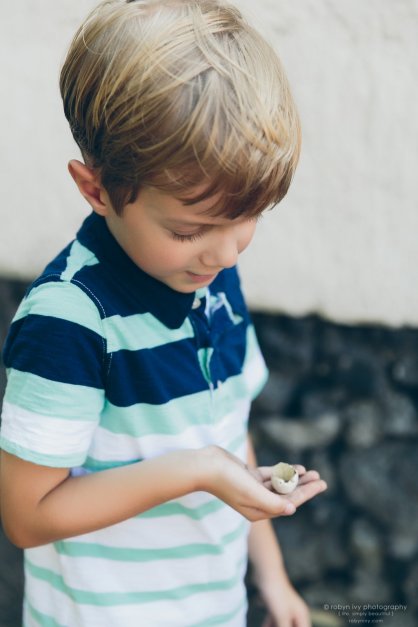
Hunter ended his earthly journey on April 5th, 2018. His family carries on Hunter’s legacy and encourages others to live with as much passion and love as Hunter did: https://facebook.com/LiveLikeHunter
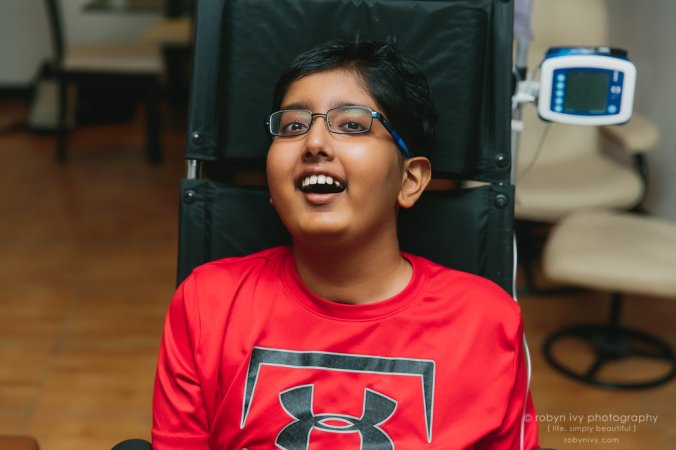 Ronil’s story is one of the hardest for me to write, maybe because I so clearly remember being 13, but more likely because of how he lives his life—with devastating beauty.
Ronil’s story is one of the hardest for me to write, maybe because I so clearly remember being 13, but more likely because of how he lives his life—with devastating beauty.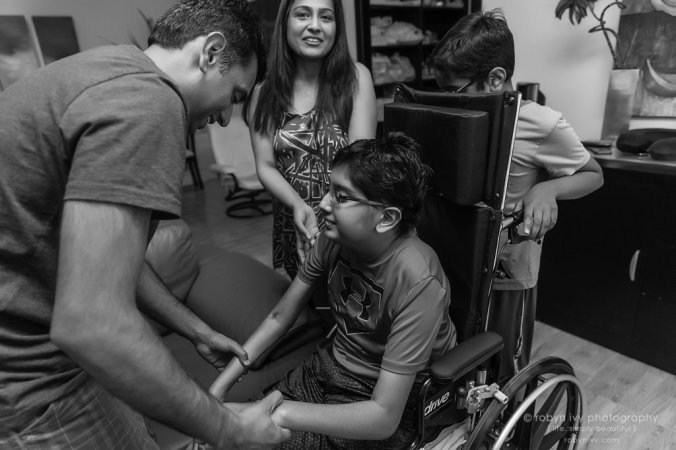 In January of 2016, Ronnie felt dizzy and collapsed unconscious on the floor while getting ready for school. An MRI showed he’d suffered two strokes due to a tumor in his brainstem. He fell into a coma, which he wasn’t expected to come out of. The doctors encouraged his parents Manisha and Milan to take Ronil off of life support, but they fought them, saying, “He will wake up.”
In January of 2016, Ronnie felt dizzy and collapsed unconscious on the floor while getting ready for school. An MRI showed he’d suffered two strokes due to a tumor in his brainstem. He fell into a coma, which he wasn’t expected to come out of. The doctors encouraged his parents Manisha and Milan to take Ronil off of life support, but they fought them, saying, “He will wake up.”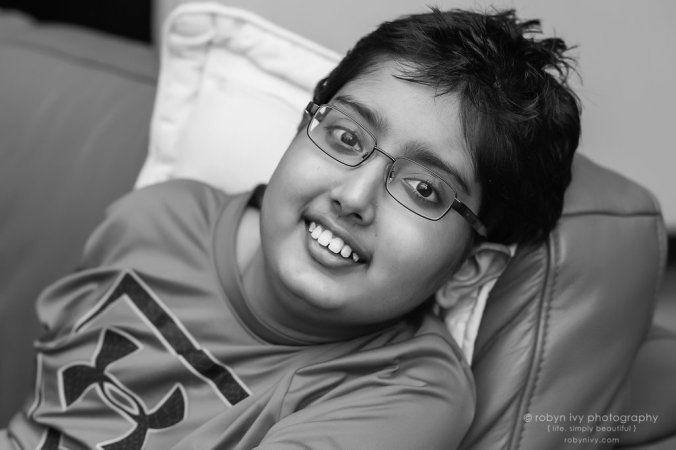 After the initial inflammation from radiation had settled by June, Ronnie was able to get around with a walker and eat by himself. He told his parents he wanted to walk, play basketball, and go to school again. His neuro-oncologist told his parents, “That’s not going to happen. He needs to aim lower.”
After the initial inflammation from radiation had settled by June, Ronnie was able to get around with a walker and eat by himself. He told his parents he wanted to walk, play basketball, and go to school again. His neuro-oncologist told his parents, “That’s not going to happen. He needs to aim lower.” But in January of 2017, Ronnie started having trouble eating and walking, and a scan confirmed that he was in progression. He underwent emergency brain surgery to put in a shunt to treat hydrocephalus. Within the span of one week in February, he lost the ability to walk, stand, and talk. He completed 12 sessions of re-radiation at UCSF, and he also received immunotherapy, but these did little to restore his functions, as his tumor was still in progression.
But in January of 2017, Ronnie started having trouble eating and walking, and a scan confirmed that he was in progression. He underwent emergency brain surgery to put in a shunt to treat hydrocephalus. Within the span of one week in February, he lost the ability to walk, stand, and talk. He completed 12 sessions of re-radiation at UCSF, and he also received immunotherapy, but these did little to restore his functions, as his tumor was still in progression.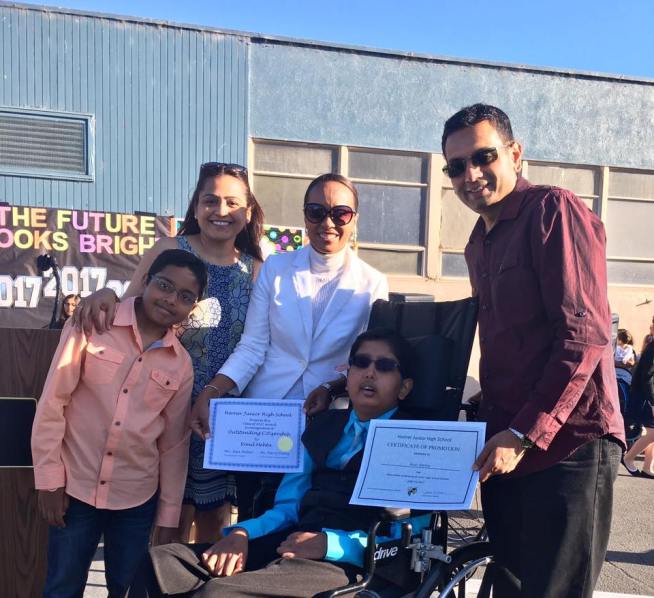 Ronnie’s 5th IA is scheduled for late July, after which they’ll go back home for a few weeks. In order to also receive the immunotherapy part of the treatment, Ronnie has to completely wean off of steroids. Manisha fears she may have moved too quickly when reducing his dose, as Ronnie lost the use of his right hand—one of the few things he could control—after coming off steroids. She weeps as she explains that even as she increased his dose again, he still can’t use that hand. The guilt she feels is suffocating.
Ronnie’s 5th IA is scheduled for late July, after which they’ll go back home for a few weeks. In order to also receive the immunotherapy part of the treatment, Ronnie has to completely wean off of steroids. Manisha fears she may have moved too quickly when reducing his dose, as Ronnie lost the use of his right hand—one of the few things he could control—after coming off steroids. She weeps as she explains that even as she increased his dose again, he still can’t use that hand. The guilt she feels is suffocating.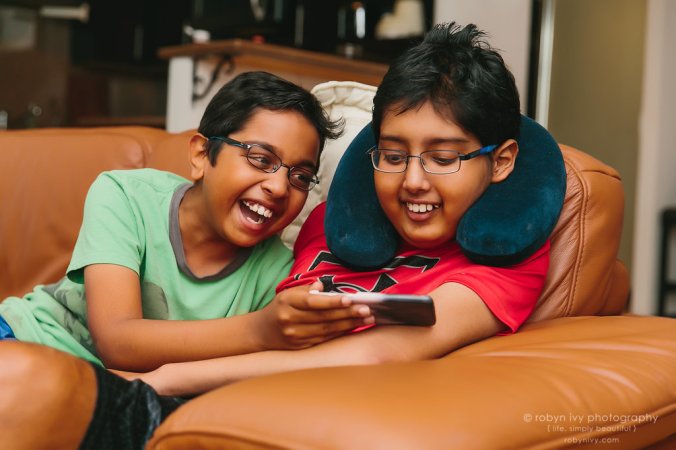 Ronil even inspired President Obama, who wrote him a personally signed letter from the White House where the president and first lady acknowledged his bravery and encouraged him to keep fighting.
Ronil even inspired President Obama, who wrote him a personally signed letter from the White House where the president and first lady acknowledged his bravery and encouraged him to keep fighting.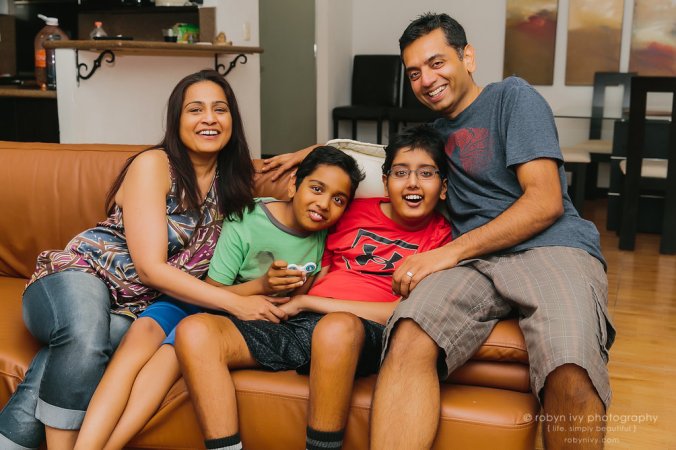 Sadly, on September 1st, 2018–the first day of Childhood Cancer Awareness Month–Ronil passed away. Your legacy lives on in everyone you knew and touched, Ronnie.
Sadly, on September 1st, 2018–the first day of Childhood Cancer Awareness Month–Ronil passed away. Your legacy lives on in everyone you knew and touched, Ronnie.
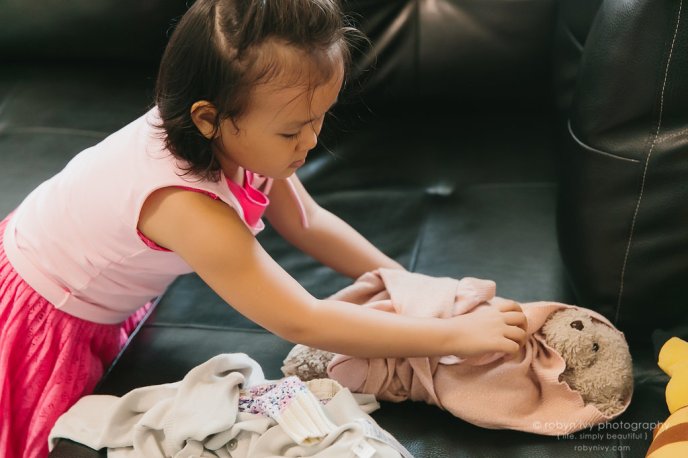

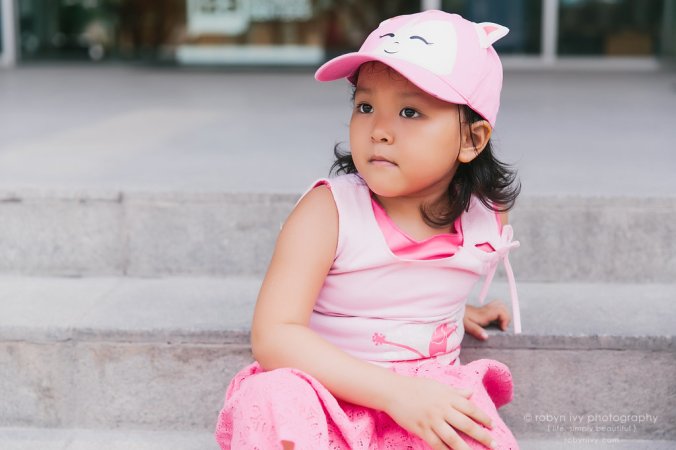
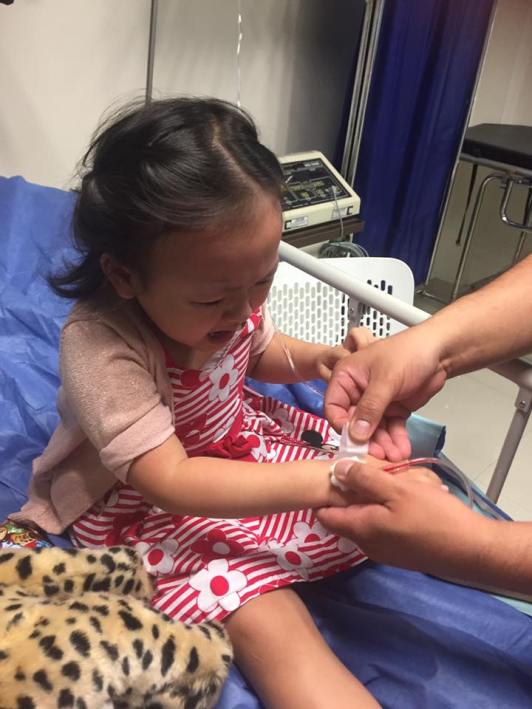
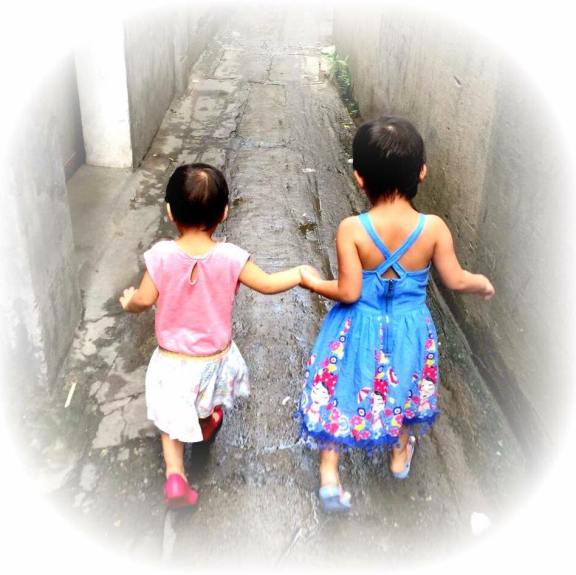
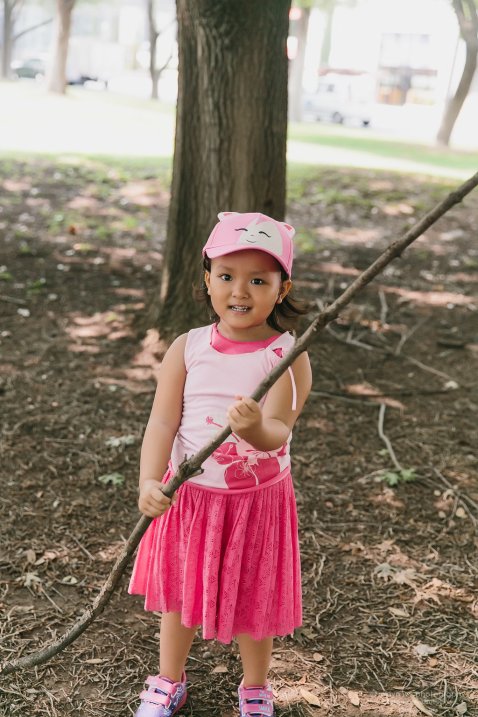
 It took some doing for us to find Andrea and her mamma Elena’s place in Monterrey (our Uber driver had a lot of patience), but as we finally entered the door to their apartment, our hearts simultaneously opened to each other. This type of thing doesn’t happen every day, but then again, it’s not that often people allow you into the most intimate corners of their lives.
It took some doing for us to find Andrea and her mamma Elena’s place in Monterrey (our Uber driver had a lot of patience), but as we finally entered the door to their apartment, our hearts simultaneously opened to each other. This type of thing doesn’t happen every day, but then again, it’s not that often people allow you into the most intimate corners of their lives.
 With violet-tipped hair and purple-rimmed glasses, Anni epitomizes all things feminine. When presented with assorted cupcake-scented lipglosses, her entire being positively lit up. She adores her dog Simba, and she revels in a plate of meaty ribs. Anni dreams of owning a restaurant when she grows up, which she plans to call Un Pizzico d’Amore, A Pinch of Love. How fitting.
With violet-tipped hair and purple-rimmed glasses, Anni epitomizes all things feminine. When presented with assorted cupcake-scented lipglosses, her entire being positively lit up. She adores her dog Simba, and she revels in a plate of meaty ribs. Anni dreams of owning a restaurant when she grows up, which she plans to call Un Pizzico d’Amore, A Pinch of Love. How fitting.



